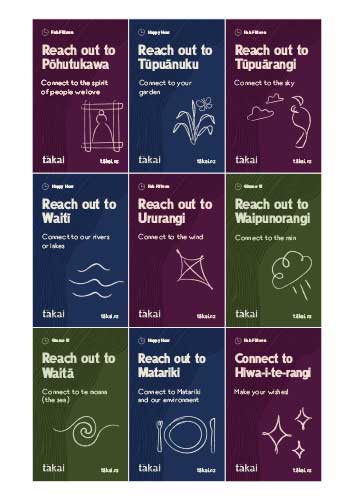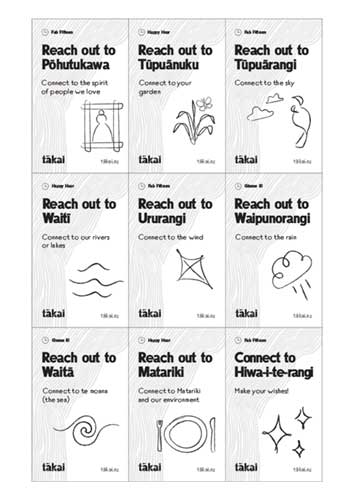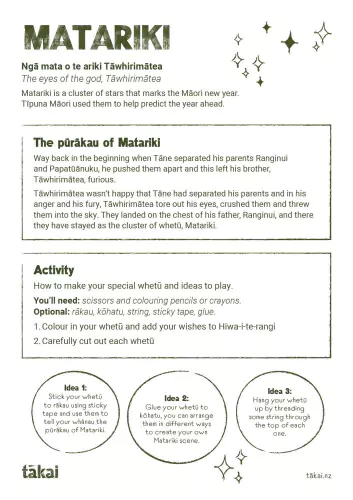
Matariki
Find out about Matariki, where it originated and its significance in Aotearoa New Zealand today.
Matariki is an open cluster of many stars, also known as the Pleiades. They feature in many cultures’ legends and folk tales. Whakatipu booklet Te Māhuri 2, page 7, tells us the key pieces of information about Matariki. In te reo Māori, ‘Matariki’ can be broken down as ‘mata riki’ — ‘tiny eyes’, or as ‘mata ariki’ — ‘eyes of the gods’.
How many stars?
There has been some debate over the number of stars that can be seen by the naked eye in the Matariki cluster. Te Papa Tongarewa, The National Museum of New Zealand(external link), says there are in fact 500 different stars in the cluster, with only 6 or 7 able to be seen without a telescope.
Te Aka Māori Dictionary(external link) suggests 9 stars are visible: ‘The brightest star in the centre of the cluster, also known as Matariki (Alcyone), married Rehua (Antares) and is the mother of the other eight stars of the Pleiades known to Māori.’
Their children are the stars known as:
- Waitī
- Waitā
- Waipunarangi
- Tupuānuku
- Tupuārangi
- Ururangi
- Pōhutukawa
- Hiwa-i-te-rangi
Matariki | Waiata Box (transcript)
A cause for celebration
The appearance of Matariki in the sky just before dawn in the last days of May or in early June was cause for celebration and a sign that various tasks in the food harvesting cycle were to be started or completed. Traditionally it was thought that the crops of the coming season were influenced by how visible and bright the stars of Matariki were. If they were really bright, warmer weather could be expected, resulting in a more productive crop.
Matariki was celebrated as the traditional Māori New Year. However, in the 1940s celebrations died out, only to be reignited again in 2000. Since then, Matariki celebrations have become much more popular and are enjoyed around the country as a New Zealand-specific New Year’s celebration, acknowledging the unique place in which we live and the land we live on.
Puanga and Matariki
In some iwi, Matariki isn’t celebrated — instead it is the arrival of the star Puanga (Rigel) that is given recognition. Puanga is the brightest star in the constellation Orion. Matariki is not seen as clearly in some parts of Aotearoa, and this is the reason why certain iwi celebrate Puanga before Matariki.
The celebration of Puanga goes for a much longer period than that of Matariki, and includes both a 2-month preparatory period followed by another 2 months of wānanga .
A commonly known whakataukī (proverb) that acknowledges Puanga is:
Puanga kai rau.
Aligned with Matariki, this whakataukī recognises the hard work that has been done of growing kai over months and months to ensure there is enough to feed the iwi during the less productive months of takurua (winter).
Both Puanga and Matariki are times to pause for reflection, to learn from the past and to plan for the future. They are seen as a period of hope symbolising review, renewal and revival. They are a time when loved ones are remembered and celebrated and are a time for sharing stories.
Learning from stories of the stars
Stories, whether traditional or personal, are a perfect way for young children to learn about the past. The stories might be to teach mokopuna about the whenua , the moana or ngā whetū (stars), and how tīpuna (ancestors) used the stars for navigation, for planting and harvesting.
Stories can help mokopuna learn about their tīpuna, both living and dead. The stories may simply be about a certain kuia and her talents and skills, perhaps sharing a special recipe she always made for whānau celebrations.
Matariki is a great way to help whānau to slow down in what can sometimes be very busy and hectic lives. It gives us a marker in which to remember, to learn and to make new plans and goals for our tamariki and whānau.
With its focus on reflection and review, Matariki can be a good time to think about clearing any past raruraru (conflicts/disputes). This may be a time to forgive and forget, for patching things up and starting a new year with a fresh and optimistic outlook.













